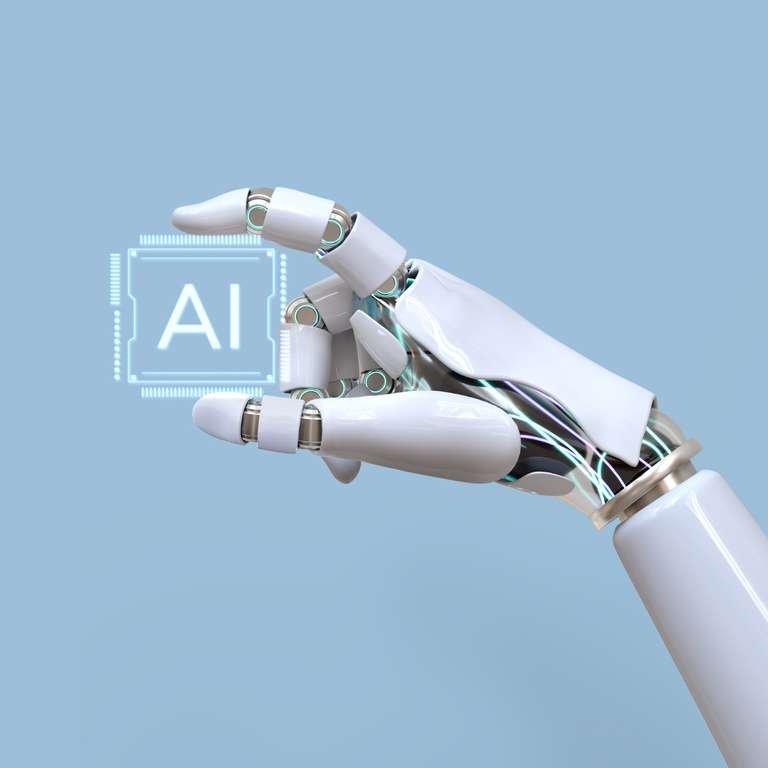Exploring The Different Types Of AI

Picture a transformed world where a sophisticated helper tackles your tiresome daily tasks. Imagine existing in an environment where convoluted and often uncomfortable small talk is a thing of the past, replaced by an AI-empowered entity that flawlessly manages social interactions. This isn't the premise of a futuristic Hollywood film but our present reality, brought to life by the remarkable force of artificial intelligence.
The range of AI facilitating this reality is as vast and varied as the tasks they can handle. This is the fascinating journey we're about to embark upon in this blog. Hold on tight because this exploration into the vast landscape of AI is set to be an exhilarating voyage of discovery!
Table of Contents
AI Based on Capability
In the world of technology, AI has emerged as a compelling force, revolutionizing various sectors and making tasks more streamlined and efficient. When we refer to AI based on capability, we categorize AI systems based on their ability to perform tasks, intelligence level, and ability to learn and improve over time. Broadly, this division of AI entails three categories: Narrow AI, General AI, and Super AI. Let's dive into these categories to better understand AI based on capabilities.
Narrow AI
Narrow AI, also known as Weak AI, is the most common form of AI in our lives today. It's purpose-built to perform specific tasks within defined boundaries. For example, recommendation algorithms used by streaming services, like Netflix or Spotify, are examples of Narrow AI. They are programmed to suggest movies or music based on user preferences and past activities.
Narrow AI operates under a set of predetermined rules and constraints. It doesn't possess understanding or consciousness; instead, it is artificial intelligence that mimics human intelligence. Despite its name, Narrow AI has a vast application range, including voice assistants like Alexa or Siri, spam filters in email services, and customer support chatbots.
General AI
Next on the horizon is General AI, also termed Strong AI. This form of AI has the potential to understand, learn, adapt, and implement knowledge just like a human being. It surpasses human intelligence and can solve unfamiliar tasks without specific programming or supervision.
Although General AI is a fascinating concept, it's still primarily theoretical. If successfully developed, General AI could perform any intellectual task that a human can, making it tremendously powerful. It represents the kind of AI in science fiction movies, where robots or AI systems show human brain-like cognitive abilities. The development of General AI is a significant focus of advanced AI research today.
Super AI
The ultimate stage in the evolution of AI is Super AI. It's a form of AI that surpasses human intelligence in practically all intellectually demanding fields, including scientific creativity, artificial general intelligence, wisdom, and social skills. This is AI taken to its utmost potential, where it doesn't just mimic or equal human intelligence but surpasses it.
While Super AI is a thrilling concept, it's also concerning. It's currently beyond our reach, and there's considerable debate about whether it should even be pursued due to potential risks. The ethical implications of creating an entity smarter than humans are vast and complex.
AI Based on Functionality
In the sphere of technological evolution, artificial intelligence is one significant pinnacle. AI's depth and scope emerge more prominently when classified based on functionality. It gives us insight into how these complex systems are designed and how they perform and interact in real-world scenarios. Let's delve into the various types of AI based on functionality: Reactive Machines, Limited Memory, Theory of Mind, and Self Aware AI.
Reactive Machines
Starting at the foundational level, we encounter Reactive Machines. These are the most rudimentary form of AI systems. Their functionality is based solely on present inputs; they can't utilize past data or experiences or predict future actions. The world-class chess-playing system, IBM's Deep Blue is a quintessential example of a reactive machine. Despite being unable to learn or recall, these machines can still perform complicated tasks proficiently, particularly in structured environments with clear rules and predictable outcomes.
Limited Memory
Moving further into the world of AI, we encounter Limited Memory AI. This artificial intelligence system can learn from historical data to make decisions. It's the underlying technology behind many contemporary systems, including autonomous vehicles. These AI machines use sensors to collect data and use this information, stored for a limited time, to make informed decisions. They learn how to respond to new data more effectively by analyzing recent inputs and their outcomes.
Theory of Mind
Taking an evolutionary leap, the Theory of Mind AI is still mainly in the conceptual phase. This AI level involves understanding that entities can have thoughts and emotions that affect their behavior. Essentially, these systems can understand the human mind and react to people's needs, emotions, and beliefs. As it stands, no fully functioning Theory of Mind AI system exists. However, its potential to revolutionize our interactions with technology in everyday life is profound.
Self Aware AI
The apex of AI functionality is the Self Aware AI. This type of AI doesn't just understand and react to human emotions—it experiences them. It has consciousness and cognizance and can predict feelings in itself and others. Although still the subject of many science fiction narratives, Self Aware AI is the ultimate goal for many AI researchers. Achieving this level of AI would mean creating a system that can make decisions autonomously, which could be both a tremendous achievement and a significant challenge for ethical and practical considerations.
Closing Thoughts
Artificial Intelligence is more than a mere jargon tossed around in technology discussions. It represents a revolution, a technological sea-change transforming every aspect of our lives and reshaping numerous industries. AI's influence is vast and pervasive, from revolutionizing diagnostics in healthcare, streamlining processes in finance, and creating immersive experiences in entertainment to personalizing learning pathways in education. However, just as a coin has two sides, so does the story of artificial intelligence. These systems offer a multitude of benefits, enhancing convenience and promoting efficiency. They possess the power to sift through enormous datasets, identify patterns, make predictions, and automate mundane tasks. This saves time, reduces human error, and allows for precision and speed that outstrips human capabilities.
It is crucial that we adopt and promote responsible and ethical AI usage. This involves establishing robust data privacy measures, setting up clear accountability structures, and ensuring that AI systems are transparent, explainable, and fair. At the same time, every AI user needs to clearly understand what these systems can do, their limitations, and their potential impact on human beings.
AI, in its varied forms and functions, holds vast potential to propel us into a future of unprecedented possibilities. However, harnessing its power responsibly will demand a judicious mix of enthusiasm, caution, and understanding. The journey requires continued dialogue, shared learning, and the collective will to navigate the AI landscape responsibly and ethically.
FAQs
What are the different types of AI?
Artificial Intelligence can be categorized in several ways, one standard classification is based on functionality, and the other is based on capability. The primary types of artificial intelligence include Reactive Machines, Limited Memory AI, Theory of Mind AI, and Self Aware AI, Narrow AI, General AI, and Super AI.
What is the most basic type of AI?
The most basic form of AI is known as Reactive Machines. These systems solely respond to present inputs and do not have the ability to learn from past experiences or predict future consequences. They can handle complex tasks within structured environments that have predictable outcomes. IBM's Deep Blue, a chess-playing system, is a prime example of a reactive machine.
What are the advantages of AI systems?
AI systems offer numerous advantages, including increased efficiency, improved accuracy through deep learning, and the ability to process vast amounts of data. They can automate repetitive tasks, reducing human error and freeing time for more complex tasks. AI systems can also make accurate predictions based on historical data, which is instrumental in finance, healthcare, and meteorology. Additionally, they can provide personalized experiences, learning from user behaviors and preferences to tailor services or recommendations to a specific task.
Can AI systems be biased?
Yes, AI systems can indeed be biased. This typically happens when the data used to train the AI system is limited. For instance, if an AI system is trained on data that reflects discriminatory hiring practices, it may replicate that bias in its own decisions. That's why using diverse and representative data is critical when training AI systems. It's also essential to conduct regular audits to detect and correct any biases that may emerge in training data over time.


